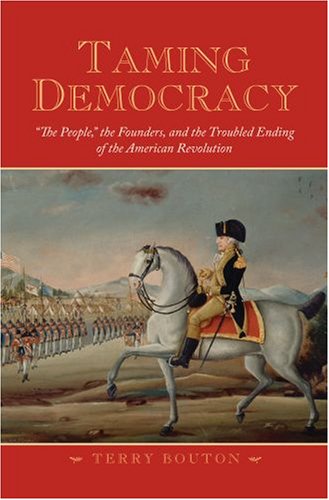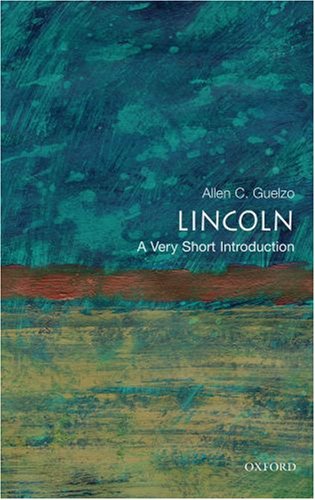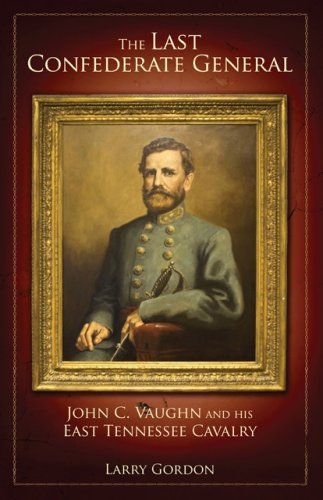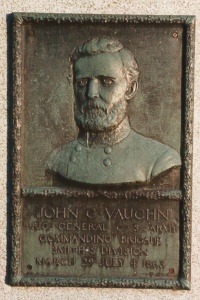Archive for March 2009
The Best of Political Philosophy
Every free minute I get of late, I tune into Steven B. Smith’s outstanding course on Academicearth.org titled Introduction to Political Philosophy. I am re-reading Plato’s The Republic with a version on my Kindle 2 and a regular copy of The Republic of Plato, Allan Bloom’s highly regarded translation. Steven Smith, Alfred Cowles Professor of Political Science at Yale University, has a distinctive teaching style that I find quite good.
I hope to make my way through the reading list as follows.
Plato, Trial and Death of Socrates
Plato, Republic
Aristotle, Politics
Machiavelli, The Prince
Thomas Hobbes, Leviathan
John Locke, Second Treatise of Government
Jean-Jacques Rousseau, Political Writings
Alexis de Tocqueville, Democracy in America
On Change

Heraclitus, 1628, Oil on panel, 85.5 cm × 70 cm, Rijksmuseum, Amsterdam
Wasn’t it Heraclitus who said that “nothing endures but change?”
Change has certainly been afoot again at my workplace. We have a large reorganization/downsizing underway, something that is occurring in many organizations across the globe. I have been reassigned to a new but old role, one that returns me to a position I thoroughly enjoy albeit with added responsibilities. I have been buried in the tasks of staffing and all of the firestorm of activities that accompany organizational shift.
That said, I have had to postpone my class, “Civil War Strategy and Tactics” until the term starting in early May. On the bright side, I may be able to catch up with some reading.
Taming Democracy: “The People,” the Founders, and the Troubled Ending of the American Revolution
I was delighted to find a package from Oxford University Press waiting at my door this afternoon and in it was a review copy of the new paperback edition of Terry Bouton’s Taming Democracy: “The People,” the Founders, and the Troubled Ending of the American Revolution. This looks to be a fascinating read, one that presents a more accurate picture of the founding fathers and the common man of the era.
This from the pre-publicity…
The Founding Fathers are generally considered the most highly regarded Americans in the history of our country; celebrated as the brave and noble group of visionaries who banded together to overthrow the British and bring democracy to the land. Yet what if, contrary to popular belief, these fondly remembered individuals weren’t the great purveyors of freedom for all that we accept them to be?
Taming Democracy devotes much of its pages to the ordinary citizens who protested against the Founding Fathers’ hypocrisy. Common citizens of all back grounds did everything from run for political office to organize political parties and uprisings against what they labeled “united avarice” controlled by “moneyed men.”
It’s worth noting that this book was recipient of the Philip S. Klein Book Prize of the Pennsylvania Historical Association and received Honorable Mention, Fraunces Tavern Museum Book Award.
 Terry Bouton is Associate Professor of History at the University of Maryland, Baltimore County and holds a PhD from Duke University. His homepage at the university can be accessed here.
Terry Bouton is Associate Professor of History at the University of Maryland, Baltimore County and holds a PhD from Duke University. His homepage at the university can be accessed here.
- TAMING DEMOCRACY: “The People,” the Founders, and the Troubled Ending of the American Revolution
- Author: Terry Bouton
- Publisher: Oxford University Press
- Published on March 19, 2009
- 332 Pages
- Paperback
- ISBN13: 9780195378566
- Price: $21.95
Lincoln: A Very Short Introduction
![]() The good folks at Oxford University Press recently sent me a review copy of Allen C. Guelzo’s Lincoln: A Very Short Introduction. I’m a fan of OUP’s “A Very Short Introduction” series which you can view in its entirety here or by clicking on the picture below. Their advantage is, obviously, their conciseness. I look forward to reading this one.
The good folks at Oxford University Press recently sent me a review copy of Allen C. Guelzo’s Lincoln: A Very Short Introduction. I’m a fan of OUP’s “A Very Short Introduction” series which you can view in its entirety here or by clicking on the picture below. Their advantage is, obviously, their conciseness. I look forward to reading this one.
Professor Guelzo is the Luce Professor of Civil War Era Studies/Professor of History, Civil War Era Studies at Gettysburg College and you can view his profile here. He holds an MA and PhD from the University of Pennsylvania.
This just in – Amazon Kindle for iPhone Application

Amazon hit my mailbox with their announcement about the launch of a Kindle application for the iPhone and iPhone Touch. This effectively makes available to iPhone users the 240,000 books currently in the Kindle Store. I know my previous posts on my new Kindle 2 (see below) generated a lot of discussion so I’ll be interested in whether any of you iPhone users plan to give this a try. I have an iPhone Touch and will give it a go myself. I’ve heard some of you say that you have some challenges reading books on your iPhone so will be interested in your thoughts. I’m assuming the size factor is one of the key issues.
Of note, I’ve read posts around the net about rumors of a larger Kindle targeted toward the student market. I’ve heard it would be 81/2 by 11 inches and thus perfect for textbooks and storing school documents or journal reading assignments. VERY COOL if it happens. The Kindle 2 missed some rumored launch dates so rumors are rumors.
The folks at Oxford University Press seem to be jumping on the Kindle bandwagon. As I mentioned in my post titled Copperheads: The Rise and Fall of Lincoln’s Opponents in the North, Weber’s book is available in a Kindle version. Also, their dictionary is preloaded on Kindle 2 and can provide word-by-word definitions at the bottom of the page as you read through a book if you so desire.
It will be interesting to see if Amazon will port their application to other phones and networks in the near future. Sprint’s Instinct, HTC Touch, and the upcoming Palm Pre (I want one) would seem to be excellent options.
What this does signal is another way to quickly download, carry, and read not only books in print but the myriad of “public domain” documents available, many being primary source material. See my previous post here on just a few of those titles already loaded on Amazon for download at either no charge or minimal charge that should be of interest to those into 19th century American and / or the American Civil War.
Here are quick links to the previous posts on Kindle 2. I recommend, if you are intrigued and considering a Kindle 2, that you read the comments.
My New Kindle 2
More on My New Kindle 2
WOW – This just In! Kindle Store has 7000 Public Domain Books including Civil War Memoirs
Free or Inexpensive American Civil War Titles for Kindle
Copperheads: The Rise and Fall of Lincoln’s Opponents in the North
The good folks at Oxford University Press have sent me a review copy of Jennifer L. Weber’s book, Copperheads: The Rise and Fall of Lincoln’s Opponents in the North. I’m very much looking forward to reading Weber’s work as it addresses the political war that was in play during the American Civil War in the North. This quick excerpt from the back jacket gives a taste of the ferocity of that conflict.
The Northern home-front during the Civil War was far from tranquil. Fierce political debates set communities on edge, spurred secret plots against the Union, and triggered widespread violence. At the heart of all the turmoil stood the anti-war Democrats, nicknamed “Copperheads.” Now, Jennifer L. Weber offers the first full-length portrait of this powerful faction to appear in almost half a century. Weber reveals how the Copperheads came perilously close to defeating Lincoln and ending the war in the South’s favor.
Note that James M. McPherson provides the foreword.
 Dr. Weber is an Assistant Professor with the Department of History at Kansas University and you can see her profile on the campus site here. Oxford University Press provides an online Q & A with Dr. Weber on her book here.
Dr. Weber is an Assistant Professor with the Department of History at Kansas University and you can see her profile on the campus site here. Oxford University Press provides an online Q & A with Dr. Weber on her book here.
- Hardcover: 304 pages
- Publisher: Oxford University Press, USA (October 9, 2006)
- Language: English
- ISBN-10: 0195306686
- ISBN-13: 978-0195306682
- Product Dimensions: 9.3 x 6.4 x 1.1 inches
- Note that this book is also available in a Kindle edition.
The Sacking of Lawrence, May 21, 1856 – 7 The Deed
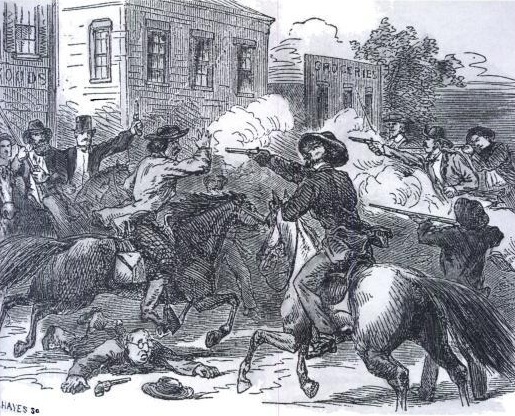
Sacking of Lawrence, 1856
This post completes the series, “The Sacking of Lawrence May 21, 1856.” Read Part 1 here, Part 2 here, Part 3 here, Part 4 here, and Part 5 here, Part 6 here.
Free-State men wounded Douglas County sheriff Samuel J. Jones when he returned to Lawrence to serve arrest warrants in the spring of 1856, despite the presence of Federal troops. The Grand Jury of Douglas County met and “returned indictments against three free-state leaders, against two newspapers at Lawrence – the Herald of Freedom and the Kansas Free State – and against the Free State Hotel at Lawrence, which, it said, was in fact a fortress, “regularly parapeted and portholed for use of small cannon and arms.” (Potter, 208) There is good evidence that the hotel was, in fact, designed with a mind toward defense with filled portholes that could be knocked out with a rifle butt. But it is curious that indictments of treason were levied toward an inanimate building.
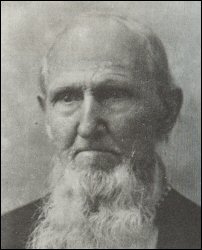 To serve the indictments and associated arrests, United States Marshal Israel B. Donaldson raised a posse inclusive of Missourians. But he left them outside of town as he arrested, along with a deputy, several minor players, others having fled. (Potter, 208) He then attempted to disband the posse but Sheriff Samuel J.Jones, healed of his wounds, rallied the men and rode into Lawrence as a mob force “alleging the need of aid in making arrests and abating nuisances under authority of the grand jury.” (Malin)
To serve the indictments and associated arrests, United States Marshal Israel B. Donaldson raised a posse inclusive of Missourians. But he left them outside of town as he arrested, along with a deputy, several minor players, others having fled. (Potter, 208) He then attempted to disband the posse but Sheriff Samuel J.Jones, healed of his wounds, rallied the men and rode into Lawrence as a mob force “alleging the need of aid in making arrests and abating nuisances under authority of the grand jury.” (Malin)

Samuel J. Jones
Michael Holt describes the events of May 21, 1856 as the work of a posse sent by the Lecompton government “to arrest several free state leaders in Lawrence.” (Holt, 194) That posse, “which included Missourians, burned some buildings and destroyed two printing presses but killed no one in the town.” (Holt, 194.) Put in that way, it sounds relatively benign but was pounced on by the Republicans as evidence that the Pierce-backed Kansas territorial government was supporting and condoning atrocities.
“The War Actually Begun,” “Triumph of the Border Ruffians,” “Lawrence in Ruins – Several Persons Slaughtered,” “Freedom Bloodily Subdued,” hyperbolized the Eastern Republican press.” (Holt, 194.) “Kansas was bleeding because lawless slaveholders were butchering defenseless northern settlers in their effort to force slavery on the territory.” (Holt, 194.)
The raid targeted the Free-State Hotel, a building constructed and owned by the New England Emigrant Aid Company. Griffin confirms that Douglas County Sheriff Samuel J. Jones led the posse. He and his men “bombarded the [Free-State] hotel with cannon and then gutted the building with gunpowder and flame. The razing of the hotel, together with the burning of Charles Robinson’s house, the wrecking of the equipment of two newspapers, the Herald of Freedom and the Kansas Free State, and a certain amount of looting and vandalism, became known as the ‘sack of Lawrence.’” (Griffin)

"Old Sacramento Cannon" captured by U.S. during the Mexican-American War in 1847 and taken to the Liberty Arsenal. The cannon was seized by pro-slavery forces in 1856 and fired during the Sacking of Lawrence. The cannon was damaged in 1896 when it was loaded with clay and straw and fired. Source: Wikipedia Commons
Griffin further claims that proslavery men in the territory justified the action by claiming Jones and his men “were simply executing an indictment of the grand jury of the United States district court at Lecompton and the orders of the presiding judge, Samuel D. Lecompte.” (Griffin)

Samuel D. Lecompte
“Free-State men were quick to agree with their enemies, but contended that judge, jury, and Jones had acted illegally and without cause. Newspaper editors sympathetic to the Free-State cause gave the affair enormous publicity — much of it merely falsehoods — and labored to convince their readers that the sack of Lawrence was yet another manifestation of Proslavery barbarism. Before a month was out, Kansas mythology was immensely richer.” (Griffin)
As a final note, both Malin, Griffin, and Holt contend that no one was killed in the raid on Lawrence. But Potter points out that one man, a slave, was killed from falling debris as the Free State Hotel was demolished. (Potter, 209) Clearly it was violent event amidst growing episodes of violence between Free-State and proslavery factions along the border between Kansas and Missouri.
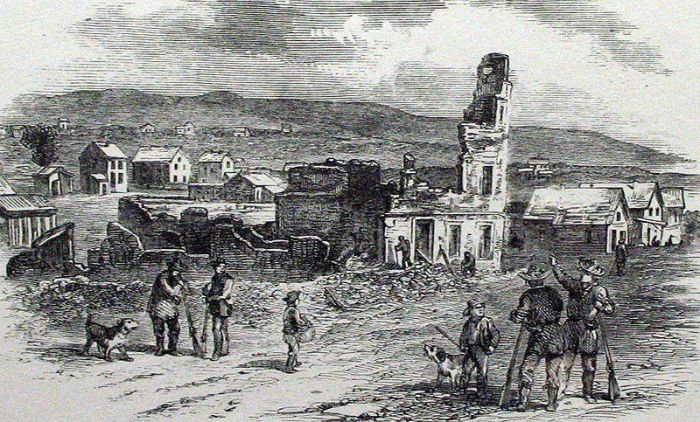
Ruins of the Free State Hotel, after the Sacking of Lawrence, Kansas, 1856
——
C. S. Griffin, “Kansas Historical QuarterlyThe University of Kansas and the Sack of Lawrence: A Problem of Intellectual Honesty,” Kansas Historical Quarterly, Winter, 1968 (Vol. XXXIV. No. 4), pages 409 to 426. Accessed online, February 14, 2009.
Michael F. Holt, The Political Crisis of the 1850’s, (New York: W. W. Norton and Company, 1983).
James C. Malin, “Judge Lecompte and the ‘Sack of Lawrence,’ May 21, 1856, ” Kansas Historical Quarterly, August 1953 (Vol. 20, No. 7), pages 465 to 494. Accessed online, February 14, 2009.
David M. Potter and Don E. Fehrenbacher, The Impending Crisis, 1848-1861, (New York: Harper and Row Publishers, Inc., 1976).
The Last Confederate General: John C. Vaughn and His East Tennessee Cavalry
The good folks at Zenith Press have sent me a review copy of The Last Confederate General: John C. Vaughn and His East Tennessee Cavalry by Larry Gordon which I’m very much looking forward to reading and reviewing. A perusal of the book shows a significant set of reference notes and a strong bibliography both of which I always appreciate. More to come.
- ISBN-13: 9780760335178
- Published on: 2009-03-15
- Original language: English
- Binding: Hardcover
- Dimensions: 5.5 x 8.5
- 272 pages
The bronze memorial below is found at Vicksburg National Military Park. It was sculpted by T.A.R. Kitson, erected in 1911 and is located 75 yards west of the Tennessee State Memorial on North Confederate Avenue.
You can read some of the official documents authored by Vaughn here.
The Sacking of Lawrence, May 21, 1856 – 6 The Wakarusa War

Samuel J. Jones
David Potter suggests that much of the discord between Kansans and Missourians was less about slavery and more about land claims.(i) The territory had not yet completed land surveys even six months after it opened for settlement so people squatted on land they wanted. Disputes over those claims, largely between Missourian and new Kansan settlers, sparked the events that culminated in the 1856 raid on Lawrence.

Samuel N. Woods
It began with a killing. A pro-slavery man named Franklin N. Coleman killed in 1855 a Free-Soiler named Charles W. Dow south of Lawrence, Kansas in a land-claim dispute. [An account of the killing by Isaac T. Goodnow can be read here.] Because Coleman claimed self-defense, he was not arrested. In retaliation, a group of Free-Soil men threatened Coleman and his corroborators and burned their property. (ii) Douglas County sheriff Samuel J. Jones was sent to arrest the aggressors but was prevented from doing so by armed Free-Soil men lead by Samuel N. Wood.

Wilson Shannon
Jones accepted the aid of an army of Missouri “Border Ruffians” who converged outside of Lawrence near the Wakarusa River with the intent of enforcing “Law and order in Kansas.” (iii) Then Kansas Territory governor Wilson Shannon averted violence through negotiation (President Pierce refused him Federal troops) and the band dispersed, albeit reluctantly. Because the threat of violence was so great, the episode became known as the Wakarusa War.
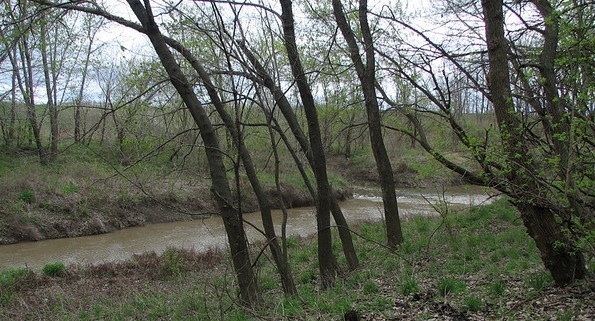
Wakarusa River near Lawrence, Kansas - Source: KansasExploring > Larry Hornbaker > Events > Blanton's Crossing
This post continues the series, “The Sacking of Lawrence May 21, 1856.” Read Part 1 here, Part 2 here, Part 3 here, Part 4 here, and Part 5 here.
 (i) David M. Potter and Don E. Fehrenbacher, The Impending Crisis, 1848-1861, (New York: Harper and Row Publishers, Inc., 1976), 206.
(i) David M. Potter and Don E. Fehrenbacher, The Impending Crisis, 1848-1861, (New York: Harper and Row Publishers, Inc., 1976), 206.
(ii) Ibid., 207.


